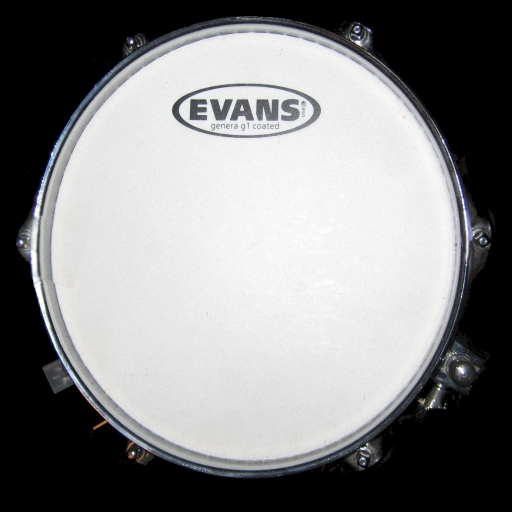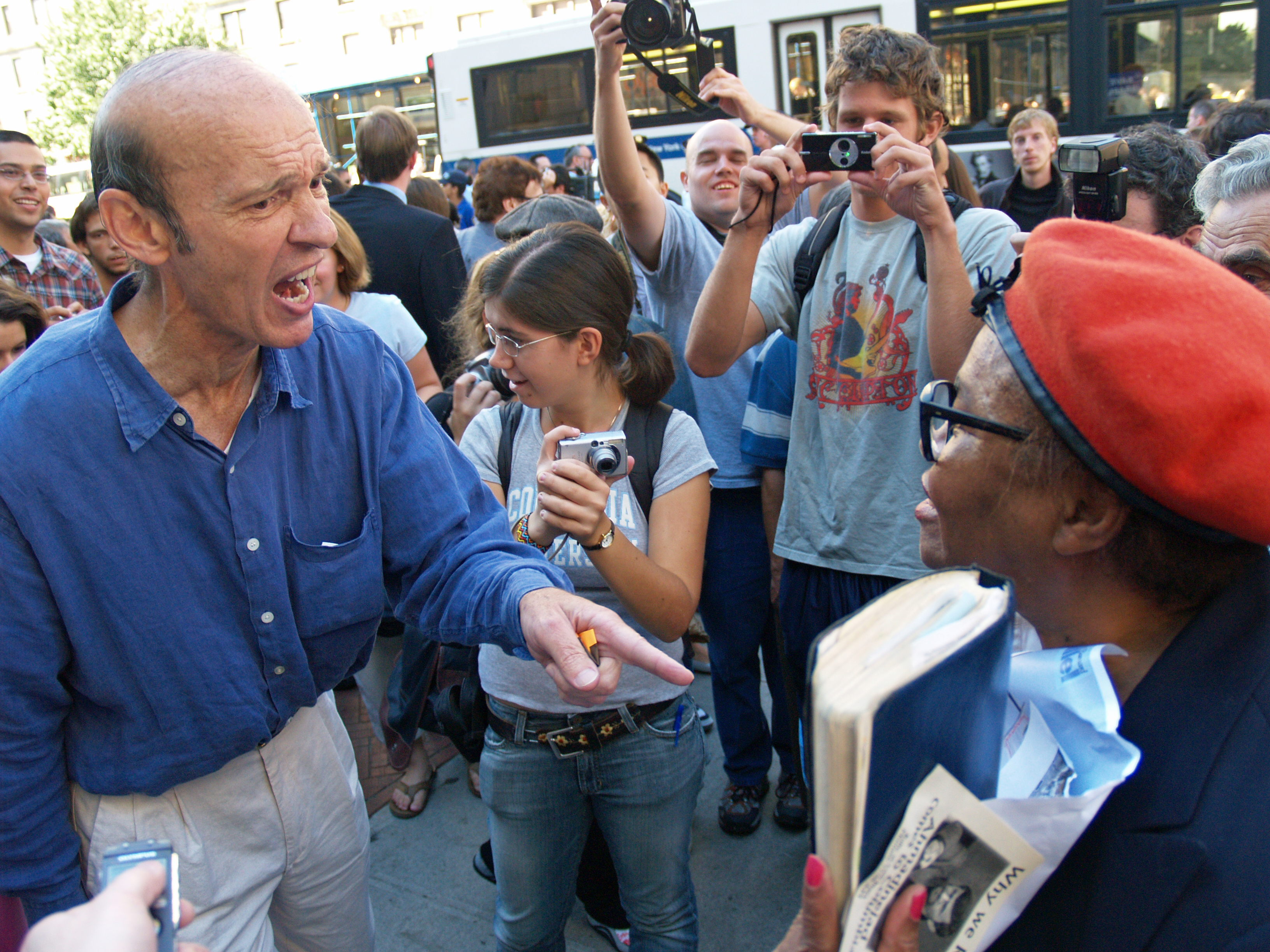|
Split-finger
The "split-finger" or "split-hand" technique is a common drumming technique (used mainly on Egyptian style goblet drums and Indian drums like tabla and kanjira) which was made popular by the famous Turkish drummer, Mısırlı Ahmet. Mısırlı Ahmet studied and practiced drumming in Egypt, hence 'Mısırlı' (the Egyptian). There are various ways of implementing the split finger technique, using one hand, or interlacing the hits using both hands. The one hand split finger. This involves striking the rim of the drum head (or a bit further down) with a downwards (or diagonal) movement of the index finger of your ornament hand (that is the left hand for right-handed people, or the right hand for left-handed people) and from there, with no extra movement, bringing your ring finger up with a slight twist to strike the rim (or close to the rim). When this is done correctly each hit should sound like a regular "ka" (which is a standard rim hit with the ornament hand). The two hand spl ... [...More Info...] [...Related Items...] OR: [Wikipedia] [Google] [Baidu] |
Mısırlı Ahmet
Mısırlı Ahmet (born Ahmet Yıldırım, 1963 in Ankara, Turkey) is a Turkish virtuoso darbuka player. Ahmet Yıldırım started his music life playing a Turkish-style darbuka in the Turkish style. He then travelled to France and then to Egypt to learn from the tabla masters: during this trip he developed his unique technique, now known as the split-finger technique, which allows very quick playing. He was called "Ahmed el Turkî" (Turkish Ahmet) in Egypt and after his journey he became known as "Mısırlı Ahmet" (Ahmet of Egypt) everywhere else. He tours and gives workshops all over the world, has recorded a number of solo albums and many contributions, and 2007 he created a percussion school in Istanbul, drawing musicians of all nationalities. Biography He began to play darbuka (a kind of goblet drum) when he was 17. There were no musicians in his family so he learned how to play by himself, and carried on his music life in Ankara until 1987. After learning the Turkish sty ... [...More Info...] [...Related Items...] OR: [Wikipedia] [Google] [Baidu] |
Drums
The drum is a member of the percussion instrument, percussion group of musical instruments. In the Hornbostel–Sachs classification system, it is a membranophones, membranophone. Drums consist of at least one Acoustic membrane, membrane, called a drumhead or drum skin, that is stretched over a shell and struck, either directly with the player's hands, or with a percussion mallet, to produce sound. There is usually a resonant head on the underside of the drum. Other techniques have been used to cause drums to make sound, such as the thumb roll. Drums are the world's oldest and most ubiquitous musical instruments, and the basic design has remained virtually unchanged for thousands of years. Drums may be played individually, with the player using a single drum, and some drums such as the djembe are almost always played in this way. Others are normally played in a set of two or more, all played by one player, such as bongo drums and timpani. A number of different drums together ... [...More Info...] [...Related Items...] OR: [Wikipedia] [Google] [Baidu] |
Goblet Drum
The goblet drum (also chalice drum, tarabuka, tarabaki, darbuka, darabuka, derbake, debuka, doumbek, dumbec, dumbeg, dumbelek, toumperleki, tumbak, or zerbaghali; / Romanized: ) is a single-head membranophone with a goblet-shaped body. It is most commonly used in the traditional music of Egypt, where it is considered the national symbol of Egyptian Shaabi Music. The instrument is also featured in traditional music from West Asia, North Africa, South Asia, and Eastern Europe. The West African djembe is also a goblet membranophone. This article focuses on the Middle Eastern and North African goblet drum. History The origin of the term ''Darbuka'' lies in the rural Egyptian Arabic slang word that changed "darb" meaning "to strike" into "darabuka". Goblet drums have been around for thousands of years and were used in Mesopotamian and Ancient Egyptian cultures. They were also seen in Babylonia and Sumer from as early as 1100 BCE. On Sulawesi, large goblet drums are used as temple ... [...More Info...] [...Related Items...] OR: [Wikipedia] [Google] [Baidu] |
Drummer
A drummer is a percussionist who creates music using drums. Most contemporary western music ensemble, bands that play Rock music, rock, Pop music, pop, jazz, or Contemporary R&B, R&B music include a drummer for purposes including timekeeping and embellishing the musical timbre. The drummer's equipment includes a drum kit (or "drum set" or "trap set"), which includes various drums, cymbals and an assortment of accessory hardware such as pedals, standing support mechanisms, and drum sticks. Particularly in the traditional music of many countries, drummers use individual drums of various sizes and designs rather than drum kits. Some use only their hands to strike the drums. In larger ensembles, the drummer may be part of a rhythm section with other percussionists playing. These musicians provide the timing and rhythmic foundation which allow the players of melodic instruments, including voices, to coordinate their musical performance. Some famous drummers include: Max Roach, ... [...More Info...] [...Related Items...] OR: [Wikipedia] [Google] [Baidu] |
Egypt
Egypt ( , ), officially the Arab Republic of Egypt, is a country spanning the Northeast Africa, northeast corner of Africa and Western Asia, southwest corner of Asia via the Sinai Peninsula. It is bordered by the Mediterranean Sea to northern coast of Egypt, the north, the Gaza Strip of Palestine and Israel to Egypt–Israel barrier, the northeast, the Red Sea to the east, Sudan to Egypt–Sudan border, the south, and Libya to Egypt–Libya border, the west; the Gulf of Aqaba in the northeast separates Egypt from Jordan and Saudi Arabia. Cairo is the capital, list of cities and towns in Egypt, largest city, and leading cultural center, while Alexandria is the second-largest city and an important hub of industry and tourism. With over 109 million inhabitants, Egypt is the List of African countries by population, third-most populous country in Africa and List of countries and dependencies by population, 15th-most populated in the world. Egypt has one of the longest histories o ... [...More Info...] [...Related Items...] OR: [Wikipedia] [Google] [Baidu] |
Drum Head
A drumhead or drum skin is a membrane stretched over one or both of the open ends of a drum. The drumhead is struck with sticks, mallets, or hands, so that it vibrates and the sound resonates through the drum. Additionally outside of percussion instruments, drumheads are also used on some string instruments, most notably the banjo. History Originally, drumheads were made from animal hide and were first used in early human history, long before records began. The term ''drumhead'' is first attested in English in 1580, in the writings of the soldier Thomas Churchyard, who mentioned how "Dice plaie began ... on the toppe of Drommes heddes". In 1956, Chick Evans invented the plastic drumhead. Plastic drumheads made from polyester are cheaper, more durable, and less sensitive to weather than animal skin. In 1957, Remo Belli and Sam Muchnick together developed a polymer head (also known as Mylar) leading to the development of the Remo drumhead company. Despite the benefits of p ... [...More Info...] [...Related Items...] OR: [Wikipedia] [Google] [Baidu] |
Index Finger
The index finger (also referred to as forefinger, first finger, second finger, pointer finger, trigger finger, digitus secundus, digitus II, and many other terms) is the second digit of a human hand. It is located between the thumb and the middle finger. It is usually the most dextrous and sensitive digit of the hand, though not the longest. It is shorter than the middle finger, and may be shorter or longer than the ring finger (see digit ratio). Anatomy " Index finger" literally means "pointing finger", from the same Latin source as '' indicate;'' its anatomical names are "index finger" and "second digit". The index finger has three phalanges. It does not contain any muscles, but is controlled by muscles in the hand by attachments of tendons to the bones. Uses A lone index finger held vertically is often used to represent the number 1 (but finger counting differs across cultures), or when held up or moved side to side (finger-wagging), it can be an admonitory ge ... [...More Info...] [...Related Items...] OR: [Wikipedia] [Google] [Baidu] |
Ring Finger
The ring finger, third finger, fourth finger, leech finger, or annulary is the fourth digit of the human hand, located between the middle finger and the little finger. Sometimes the term ring finger only refers to the fourth digit of a left-hand, so named for its traditional association with wedding rings in many societies, although not all use this digit as the ring finger. Traditionally, a wedding ring was worn only by the bride or wife, but in recent times more men also wear a wedding ring. It is also the custom in some societies to wear an engagement ring on the ring finger. In anatomy, the ring finger is called ''digitus medicinalis'', ''the fourth digit'', ''digitus annularis'', ''digitus quartus'', or ''digitus IV''. In Latin, the word ''anulus'' means "ring", ''digitus'' means "digit", and ''quartus'' means "fourth". Etymology The origin of the selection of the fourth digit as the ring finger is not definitively known. According to László A. Magyar, the names of the ... [...More Info...] [...Related Items...] OR: [Wikipedia] [Google] [Baidu] |
Hand
A hand is a prehensile, multi-fingered appendage located at the end of the forearm or forelimb of primates such as humans, chimpanzees, monkeys, and lemurs. A few other vertebrates such as the Koala#Characteristics, koala (which has two thumb#Opposition and apposition, opposable thumbs on each "hand" and fingerprints extremely similar to human fingerprints) are often described as having "hands" instead of paws on their front limbs. The raccoon is usually described as having "hands" though opposable thumbs are lacking. Some evolutionary anatomists use the term ''hand'' to refer to the appendage of digits on the forelimb more generally—for example, in the context of whether the three Digit (anatomy), digits of the bird hand involved the same Homology (biology), homologous loss of two digits as in the dinosaur hand. The human hand usually has five digits: Finger numbering#Four-finger system, four fingers plus one thumb; however, these are often referred to collectively as Finger ... [...More Info...] [...Related Items...] OR: [Wikipedia] [Google] [Baidu] |
Wrist
In human anatomy, the wrist is variously defined as (1) the carpus or carpal bones, the complex of eight bones forming the proximal skeletal segment of the hand; "The wrist contains eight bones, roughly aligned in two rows, known as the carpal bones." (2) the wrist joint or radiocarpal joint, the joint between the radius and the carpus and; (3) the anatomical region surrounding the carpus including the distal parts of the bones of the forearm and the proximal parts of the metacarpus or five metacarpal bones and the series of joints between these bones, thus referred to as ''wrist joints''. "With the large number of bones composing the wrist (ulna, radius, eight carpas, and five metacarpals), it makes sense that there are many, many joints that make up the structure known as the wrist." This region also includes the carpal tunnel, the anatomical snuff box, bracelet lines, the flexor retinaculum, and the extensor retinaculum. As a consequence of these various definitions, f ... [...More Info...] [...Related Items...] OR: [Wikipedia] [Google] [Baidu] |





